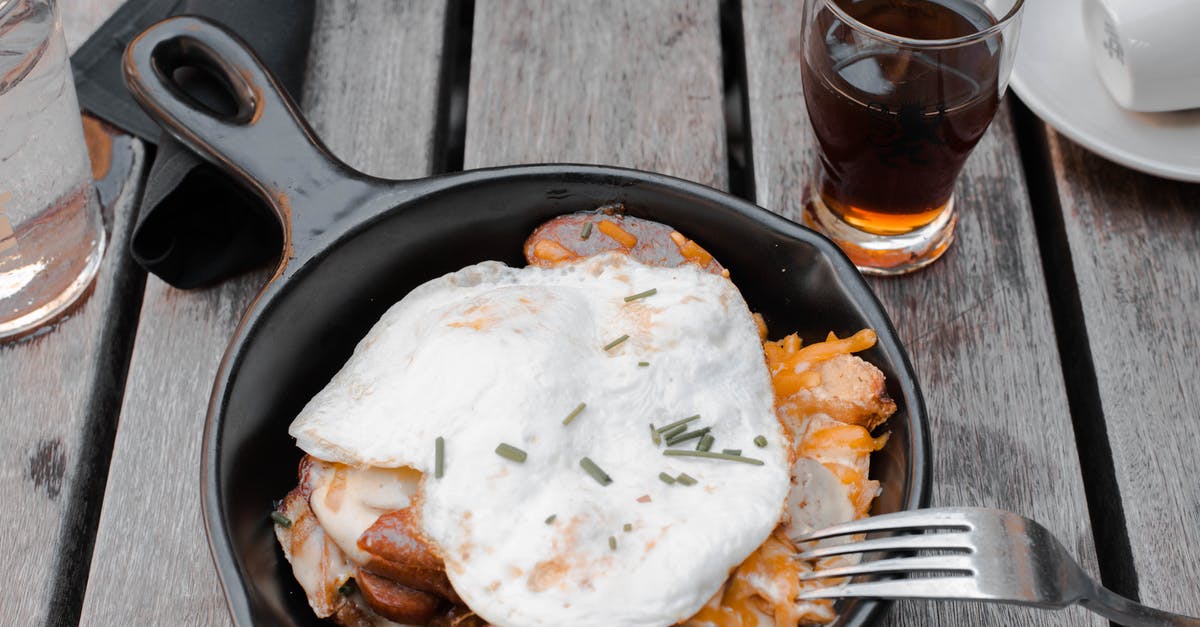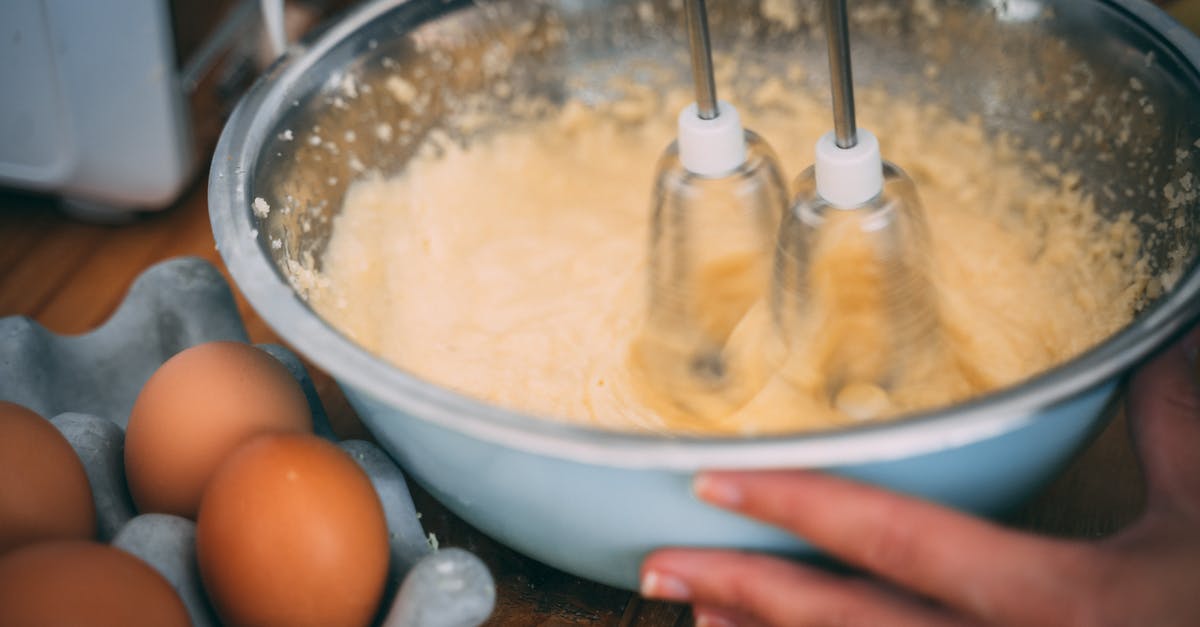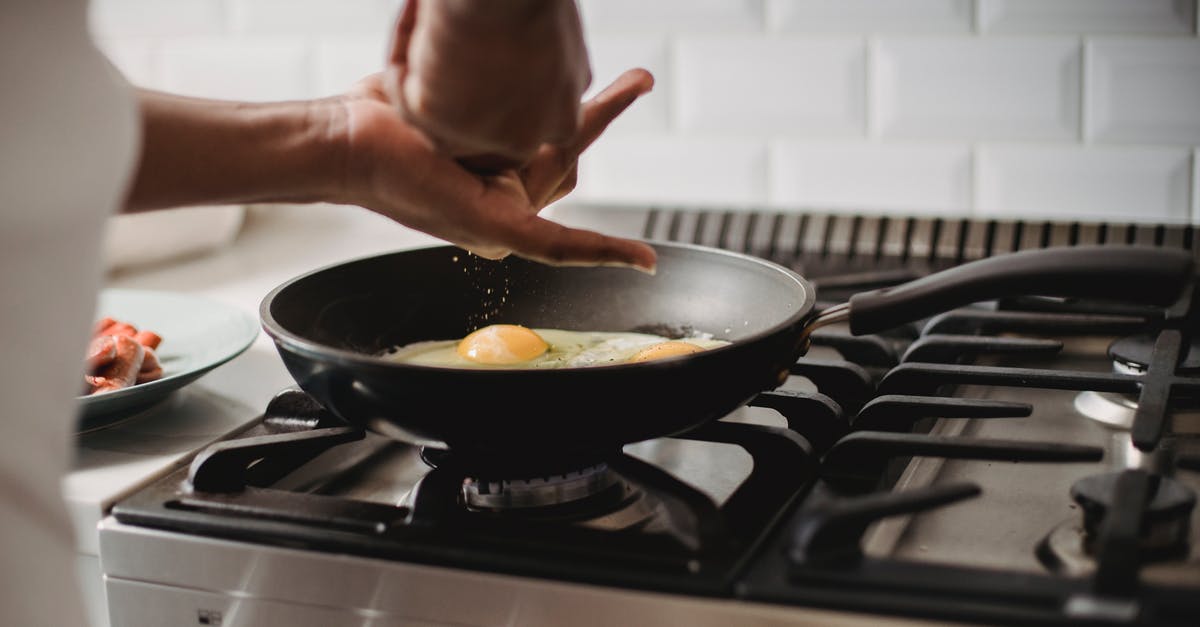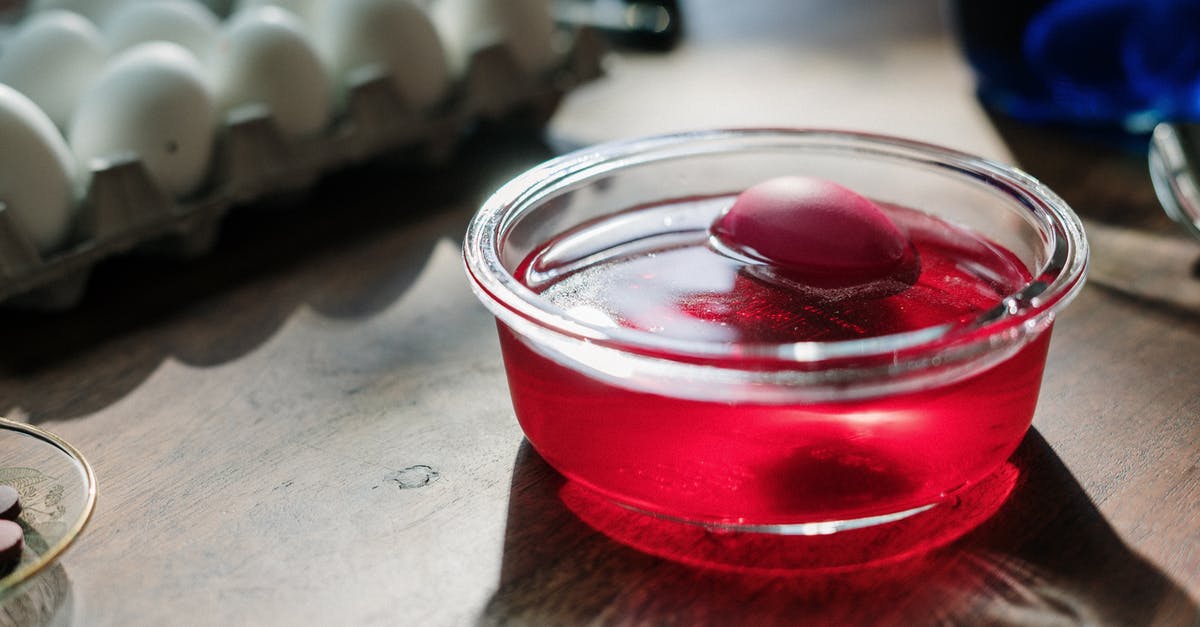Cooking Scrambled Eggs ends up with excess liquid

Every time I cook scrambled eggs with veggies or meat in them, there is always liquid at the bottom of the bowl I'm eating them from. Even if I super cook the eggs, even if I super cook the extras first. Always liquid. It's very annoying. I think maybe it is because I put the eggs in a bowl right when they are done cooking and that is creating some sort of condensation. Should I wait a bit before plating? Maybe it's something else? I could really use advice. Having runny eggs is a disgrace.
Best Answer
You've already spotted two of the possible reasons for scrambled eggs to sit in a pool of water: condensation, and the other ingredients in the scramble seeping moisture. The condensation you can deal with by leaving the eggs to sit (off heat) for 2-3 minutes before plating them. You're already taking a stab at making the fillings not wet; aside from cooking them well (and making sure to cook off any moisture), some wet fillings (zucchini, tomatoes, etc.) can also benefit from salting and blotting with paper towels.
However, there's another place for moisture to come from, and that's the eggs themselves. This problem is called "weeping", and affects cooked eggs in all forms (scrambled eggs, quiche, meringues, even boiled eggs). Over time, as cooked eggs sit, their protein structure squeezes out the water in them. Various problems can cause that to happen within minutes, as it is in your case.
Here's some tips for avoiding weepy scrambled eggs:
- Add very little, or no, extra liquid to the eggs. This means that if you tend to add milk or cream to your beaten eggs, it should be no more than 2 tsp.
- Make sure to scramble the eggs uncovered, so their moisture can escape as steam.
- Salt the beaten eggs 15-30 minutes before cooking them, instead of salting them while cooking. This changes the protein structure of the egg white so that it's less likely to lose moisture. If you forget, or don't have time, then wait and salt the eggs on the plate; salting them in the pan is almost a guarantee of weeping, in my experience (and Kenji's).
- Avoid overcooking the eggs. If you cook them "dry", they're more likely to weep. If you like your scrambled eggs dry, then cook them until almost firm, and let them continue setting up off-heat. Try cooking over low-medium heat until you get the hang of things.
- In addition to wet fillings, fillings that are very acidic (like fresh tomatoes or tomatillos) can affect the eggs and cause them to weep, so consider adding these as a topping instead of cooked into the eggs.
Some additional references:
Pictures about "Cooking Scrambled Eggs ends up with excess liquid"



Quick Answer about "Cooking Scrambled Eggs ends up with excess liquid"
What to do if your scrambled eggs are too watery?
Whisk some eggs, add milk/salt/pepper. Pour into pan on medium heat, move around for a few minutes until nice and firmed up. Sometimes I grate cheese into it as it cooks. I turn the heat off, and all of a sudden they're watery.Why does scrambled egg go watery and rubbery?
When eggs are cooked past their semi-solid state, the water that is still inside the egg begins to evaporate. With enough heat and time, it disappears completely. This also causes the proteins to contract tightly and makes the texture of the eggs turn into a rubbery mess.Is it OK if scrambled eggs are wet?
Cook eggs until both the yolk and the white are firm. Scrambled eggs should not be runny. Casseroles and other dishes containing eggs should be cooked to 160\xb0 F.What happens to scrambled eggs as they are overcooked?
Overcooking an egg, no matter the method of preparation, scrambled, fried, boiled, etc., will harden the eggs and give it a rubbery and somewhat crispy texture but can still be edible.A secret Michelin way of cooking scrambled eggs in boiling water \
More answers regarding cooking Scrambled Eggs ends up with excess liquid
Answer 2
Hmm, first, rule out "external" water...
I'm adding no more than 2 spoons of water on ~8 egg omelet. Add some salt when beating the eggs (try not to overdue the air inclusion - fluffiness). Add a little bit of oil, maybe some butter. Make sure the pan is not very hot, add the eggs. Raise the flame, and stir them, no cover. Keep stirring, folding, and slicing the eggs, as they cook. There is a point where everything is congealed, all the proteins are cooked. Past that point, the eggs will start to shrink, and loose water, oil, etc.
If you insist on cooking, the water will evaporate, and the eggs will start to brown... depending on taste, this is how I like them (not the most healthy ones, but it is a matter of taste).
If you add stuff, that will increase the "external" water. Add mushrooms, tomatoes, and you'll have a hard time getting the water out... the congealed phase will be extremely brief, and the salt will pull water out of the vegetables at a prodigious rate. The key is to flash cook everything (think Asian cuisine, wok, extreme heat, etc.).
Also, as part of "extra", you can get condensation, if you cover the food after cooking phase. Leave it uncovered, at least until no more steam is emitted, or it will get back in ;)
In the end, you can plate the eggs, and get rid of the excess water/juice. As long as the eggs are cooked, everything should be OK. Minus the aspect...
Answer 3
The water probably comes from the vegetables. Make sure they're precooked and as dry as possible before adding them to the scrambled egg. But if you overcook scrambled egg then it will tend to weep itself.
Either way adding one teaspoon of ordinary flour per egg to the mixture will help stop that. Any starch will probably work but flour works the best. You can't taste it.
It may seem strange to add flour but scrambled egg is an actually in the family of egg custard recipes, and flour is one of the standard ingredients to make custards. During cooking the egg gels, and the flour helps to stabilize the gel.
Answer 4
Water is definitely from veggies. I would cook scrambled egg and veggies separately and mix then after cooking.
Sources: Stack Exchange - This article follows the attribution requirements of Stack Exchange and is licensed under CC BY-SA 3.0.
Images: Chitokan, Taryn Elliott, Ketut Subiyanto, cottonbro
